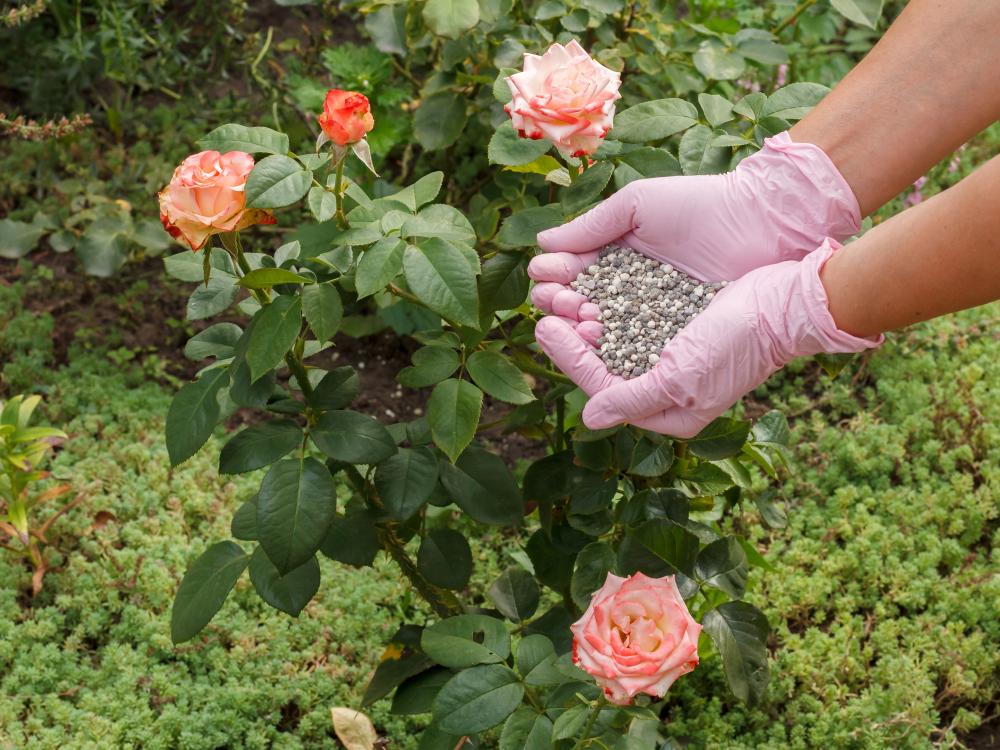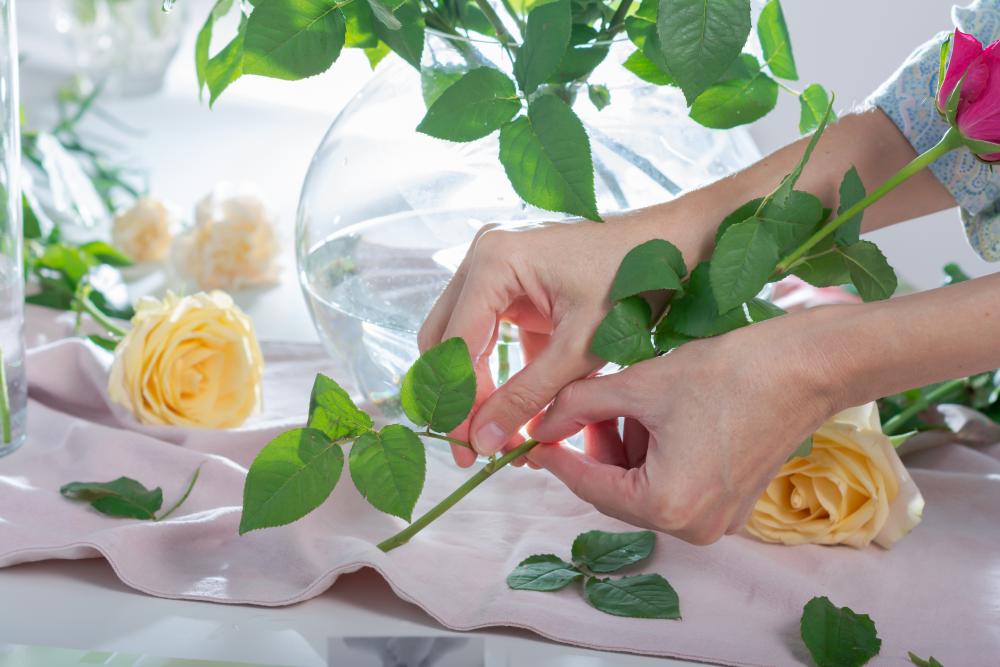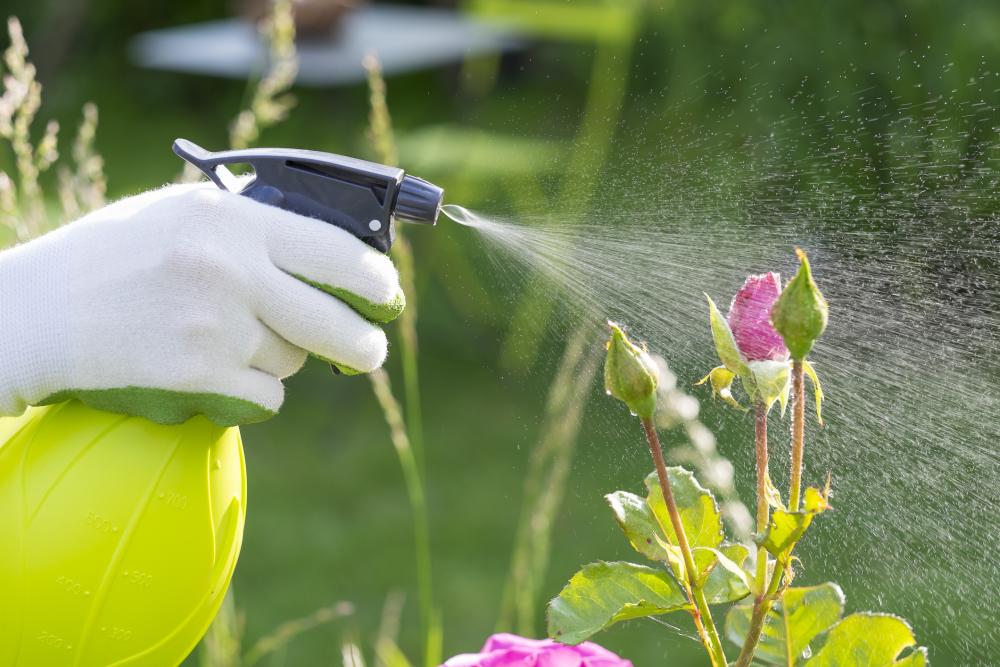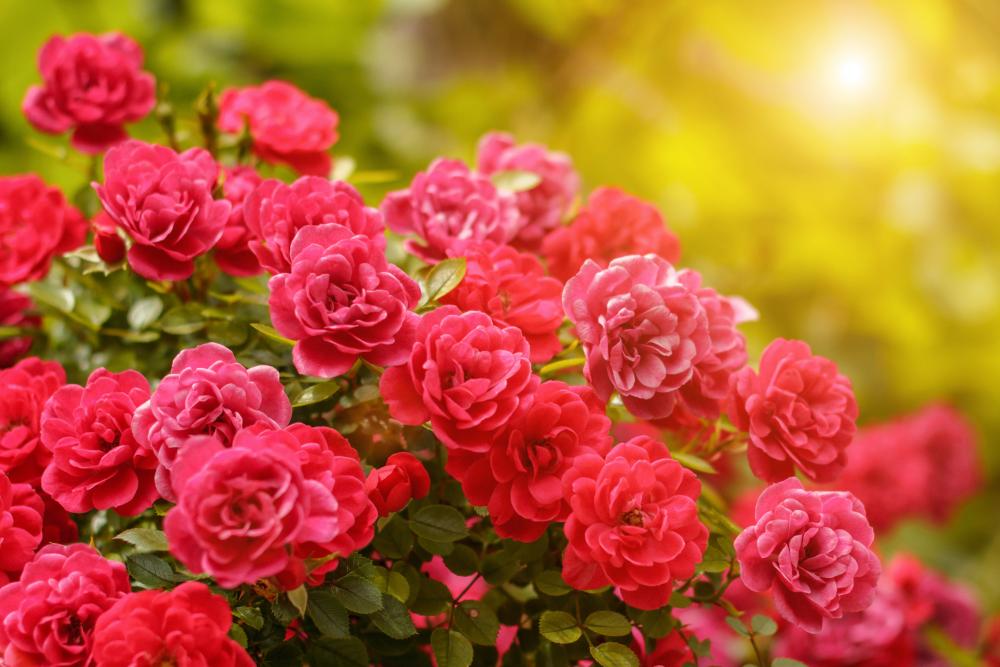Rose Growing Problems And What You Can Do About Them
Romantic, fragrant, and colorful, roses symbolize love more than any other flower on this green earth. Just take a look at the covers of romance novels on Amazon. The rose is the most featured flower on these covers. And if roses look good on the cover of books, they look even better in real life.
But they’re not easy to grow. Their charming beauty and wafting scents that tickle your nose, all come at a price. And the price here is a lot of hard work and care and maintenance to keep the rose bush healthy. Sometimes the rose growing problems have little to do with you and more to do with the cultivar itself. Like when the roses change color all of a sudden or they have holes in their leaves.
We put together a list of some of the most common rose growing problems you might encounter and provided different solutions for each problem.
Roses Changing Colors
It’s not uncommon for a rose that has been blossoming red flowers for years to turn yellow or white all of a sudden. And before you start blaming yourself or your rose care skills, you should examine the history of the rose more closely.
Are you growing a natural species or is it a cultivar? Is there a chance your rose has been grafted? And if the rose is a natural species, has the temperature changed drastically recently in your region? Did you have unpredictable weather conditions right around the time the flower buds were developing?
Finally, when you have exhausted all of the above possible causes for the roses changing colors, you can look for diseases as the underlying causes of the problem.
How to Fix It
First off, if the rose has been grafted, it’s normal for the graft to go back to the original characteristics of the rose before it was grafted. This is called graft reversion and there’s little you can do about it. What happened was the grafted part of the bush has died and the rose stock is the one responsible for the blooms with the different colors. Check the canes that are blossoming. Are they coming from the grafted part or below it? Chances are the stock is growing its own canes now with different blooms.
When that happens and the roots of the bush start growing their own canes with different blooms this is called rose sport. It’s not exactly a bad thing and you will have one bush growing roses of two colors. There’s nothing to fix here.
But if it’s neither a graft problem nor a rose sport issue, then check the weather conditions lately. In extremely hot conditions, the roses tend to be more conservative both in their bloom size and color saturation. You’ll notice that in the early spring and late fall, the blooms are larger and more vibrant than their counterparts that open in the summer. This has to do with the changes in the temperature and there’s little you can do about it.
Sometimes a disease is the cause of the change of colors of the rose. For example, botrytis blight is known to cause the roses to look out of shape, form, and color pattern. Spray the infected rose bushes with a fungicide to eliminate the infection and bring the blooms back to health.
Roses Have Holes in Leaves
The word hole doesn’t resonate well with an ornamental plant. Roses above all are grown for their lush foliage and fragrant blossoms. So when you see holes in the leaves, you have to act fast to prevent further damage to the foliage and possibly the flowers themselves. But first, you need to know what’s causing these holes in the rose leaves and how you can stop them.
In many instances, there’s no sinister cause behind the leaves ripping off or having tears and holes. It could very well be the wind blowing strong and impaling the leaves on the thorns on the stems. But if these are not tiny holes but large ones and if they keep growing bigger and bigger by the day, there’s a good chance that pests are the culprits here.
How to Fix It
Notice how we said pests and not a pest. That’s because many bugs are responsible for the dreary holes and tears in the leaves of the rose bushes. Each one has its trademark hole design and you can identify the pest by the shape and size of the hole it makes. Here are the most common pests that eat rose leaves.
- Leafcutting Bees: Bees are associated with pollination and are considered good bugs. But the cutter bees take their job a little over the top and start eating the leaves and not just the nectar of the flowers. The holes are crescent-shaped and cause no damage to the bush. Consider them a small price to pay for all the good work the bees do in your garden.
- Rose Slugs: There’s nothing good about slugs and their presence in your garden is a sign of the damage they’ll cause to the plants. Rose slugs specialize in rose bushes and devour the leaves like there’s no tomorrow. By the time they’re done, you’re left with a stripped-down rose bush with few leaves if any left. Remove the damaged leaves as soon as you notice them and spray the bush with a pesticide.
- Rose Chafers: These voracious bugs will not stop at eating the leaves but will move to the blooms and feed on the petals as well. Drown the rose chafers in a bucket full of water and soap.
- Caterpillars: The holes caterpillars make are usually at the center of the leaves and have unusual shapes that follow no pattern. You can manually pick up the caterpillars and dispose of them safely in a bucket of soapy water.
Rose Water Propagation
As we have explained in a previous post, roses can be propagated in many ways. One way to start your rose cutting is in a glass of water. Rose water propagation is not the most common way to grow a rose bush, but it still works if you follow the guidelines carefully. And depending on the cultivar you start and the time of year, you can have a sapling with healthy roots growing in the water and ready to transplant in a more suitable medium.
How to Fix It
The main factors that can make or break your rose water propagation are the cutting itself, the water, and the temperature of the room. Here’s how you can propagate a rose cutting in water successfully.
- The best time to start a rose from a cutting in water is in the early summer.
- Select a healthy stem growing on a mature rose bush and cut 6 inches of it below the node using a sterilized blade.
- Remove the leaves on the bottom half of the cutting and leave about 2 or 3 leaves at the top.
- Fill a glass halfway with water and drop the cutting in the water. Keep the leaves above the water surface.
- The water should be at room temperature or a little warmer. The air temperature should be above 55 degrees Fduring the day.
- Place the glass with the cutting in a sunny spot that gets the morning sun.
- Change the water in the glass once every couple of days to prevent mold buildup.
- It might take up to a few weeks for the cutting to develop roots depending on the cultivar.
- When the roots are about 3 inches long, it’s time to transplant the sapling.
- You can transplant the rose sapling in the garden or in a pot.
Preserving Rose Flowers With Wax
Preserving rose flowers has been a passion for many people for centuries. Some people resorted to the simple technique of drying up the roses between the pages of a large book. It’s effective except that the flower loses its shape and colors in the process.
A better method is to preserve the rose flowers with wax. Maybe the rose has a special meaning for you. Maybe it’s a gift from someone in your life or it reminds you of a happy event. Either way, you can preserve the beauty of that moment and keep the rose looking fresh and beautiful forever.
How to Fix It
First, you’ll need to choose the right wax for the job. While you can use bee wax, both paraffin and soy wax give better results and are more lasting than bee wax. When you’re ready to preserve the rose in wax, follow these steps.
- The rose should have a stem about 8 inches long so you can display it in a vase.
- Melt the wax in a container on a stove with a temperature between 120 and 130 degrees F.
- Take the wax off the stove and clasp a clothespin to the end of the stem of the rose.
- Dip the rose face down into the wax so that the wax reaches the first two inches of the stem behind the flower.
- Take out the rose then lay it horizontally into the container holding it by the clothespin. Twirl it a bit so that the wax covers all the nooks and crannies between the petals.
- Shake the rose vigorously to get rid of the excess wax.
- If the wax pools down in the pit of the petals or the heart of the rose, use a cotton swab to dislodge it.
- While the wax is still hot, you can change the shape and direction of the petals using a needle or toothpick.
- Place the waxed rose in a short glass keeping the flower away from the rim of the glass and let it dry.
- When the wax is fully dry, you can dip the rose again in the hot wax to get any spots you have missed the first time.
Epsom Salt Rose Fertilizer
Epsom salt is a common product in many homes. You’ll often find it in the medicine cabinet where people use it to treat aching muscles and bruises. But how good is Epsom salt to roses? And can you use it as a fertilizer?
The short answer is yes. Epsom salt helps rose bushes have fuller foliage, richer colors, and larger blooms. The key ingredients of Epsom salt are magnesium and sulfur. Both are plant food supplements that encourage robust growth. So how would you use Epsom salt as a rose fertilizer?
How to Fix It
The key to using Epsom salt with roses is not to give the plant too much and to avoid getting the salt on the leaves. On average, one mature rose bush will need about a half cup of Epsom salt per year. Work the fertilizer into the soil around the drip line of the rose bush without sprinkling it on the base or the roots directly.
Some gardeners prefer to dissolve Epsom salt into water and feed it to the rose bush. This method avoids burning the roots or leaves. Usually, you’ll need one spoon of Epsom salt per one gallon and feed it to the bush once every 4 weeks during the spring and summer.



